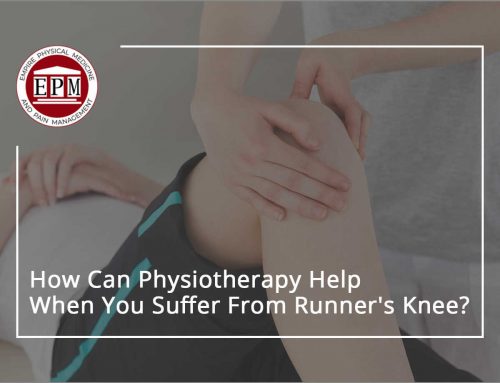
If you’ve ever suffered from a herniated disc, you know how uncomfortable they can be. Everyday motions like walking, sitting and standing can cause pain. Almost one out of every five Americans are afflicted with herniated discs and is the most common causes of back and leg pain.
You don’t have to live with pain caused by a herniated disc however. Physical therapy can help strengthen the surrounding muscles to better support your spine and diminish pain. Under the guidance of one of our trained physical therapists, our focus is to help you stretch and strengthen the muscles while targeting the area.
What is a Herniated Disc?
A herniated disc occurs when the inner gel-like substance within your disc breaks through and impinges on a surrounding nerve. The pain may feel like a shock or it may radiate down your legs or arms depending on where the affected disc is.
There are many stretches you can do to alleviate the pressures off your affected discs. Depending on where the pain is, different exercises can help. If your herniation causes a shooting pain to radiate down your leg, these stretches will ease the aches:
Seated Hamstring Stretch
This stretch will help loosen your hamstring muscle which will then reduce the pressure on the sciatic nerve and provide for better lumbar support. To start, you’ll need two chairs, both placed horizontally and facing each other. Sit on the edge of one of the chairs with both feet planted on the ground about a few inches apart. Place your right leg in front of you and rest it on the other chair. Lean forward over this leg until you feel the stretch in the back of your thigh. Hold this position for 30 seconds and then alternate so that your left leg is resting on the chair and your right foot is on the ground and repeat.
Lying Hamstring Stretch
Lie on the ground with your back flat, knees bent and your feet on the ground. Bring your right knee towards your chest with your feet facing up towards the ceiling while your other knee remains bent. Use a towel or a strap to deepen the stretch and hold your right leg straight in this position until you feel a slight tension in the hamstring. Hold for ten seconds. Repeat with your left leg.
Standing Hamstring Stretch
This can be done outside the comfort of your own home as there are no props or materials required. For this stretch you’ll want to stand with your feet evenly apart. As you breathe, suck your core in so that your belly button is closer to your spine. Keep your shoulders back so that your spine is elongated. Place your hands on the tops of your thighs and avoid your knees so that you can create stability. Keep a flat back and hold this pose for 30 seconds.
If the discomfort is in your lower back, try these stretches:
Knee to Chest stretch. While lying down, bring one knee close to your chest and hold it there with both hands. Hold and repeat with the other knee.
If you have discomfort in your mid-back, try these following three stretches.
If your pain is in the neck or upper back area, these stretches can ease the pain in the neck and
shoulders:
Shoulder Retraction Stretch: Standing tall, place your arms so that they form a “W.” Bring your elbows towards your sides so that your shoulder blades are squeezing together. You should feel this stretch in between your shoulder blades.
Side-to-Side Neck Stretch. Tilt your head in one direction so that your left ear is towards your left shoulder. Hold and repeat so that your right ear is leaning towards your right shoulder. Repeat this several times.
Chin Tuck Stretch. Start by resting your chin on your chest. After holding for ten seconds, tilt your head back so that the back of your skull is leaning towards your back and you’re looking comfortably up. You should feel the stretch in the back of the neck.
Published By:
Empire Physical Medicine & Pain Management
7 W 45th St floor 9,
New York, NY 10036
Phone: (646) 665-7109
Website: https://manhattanpainrelief.com





